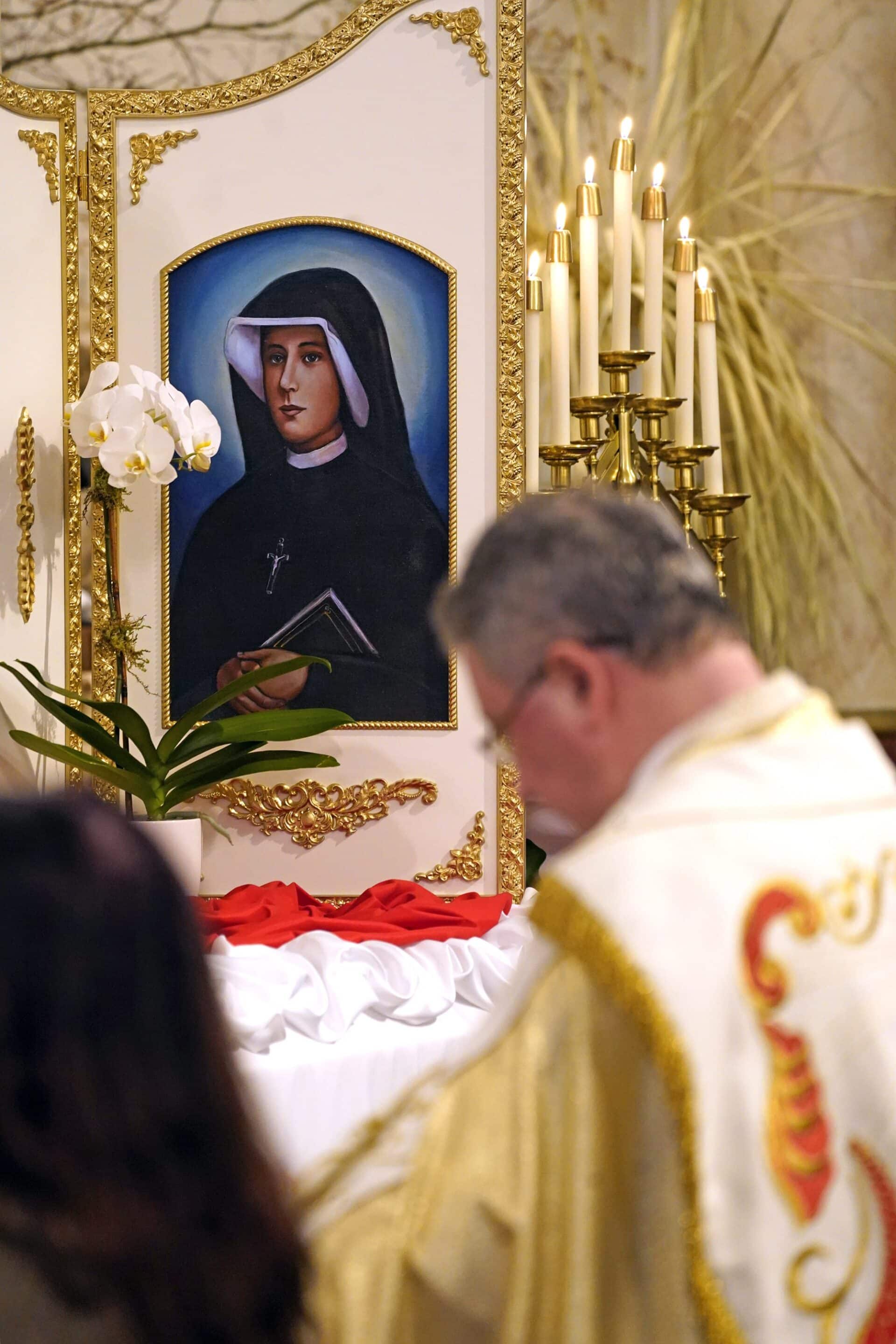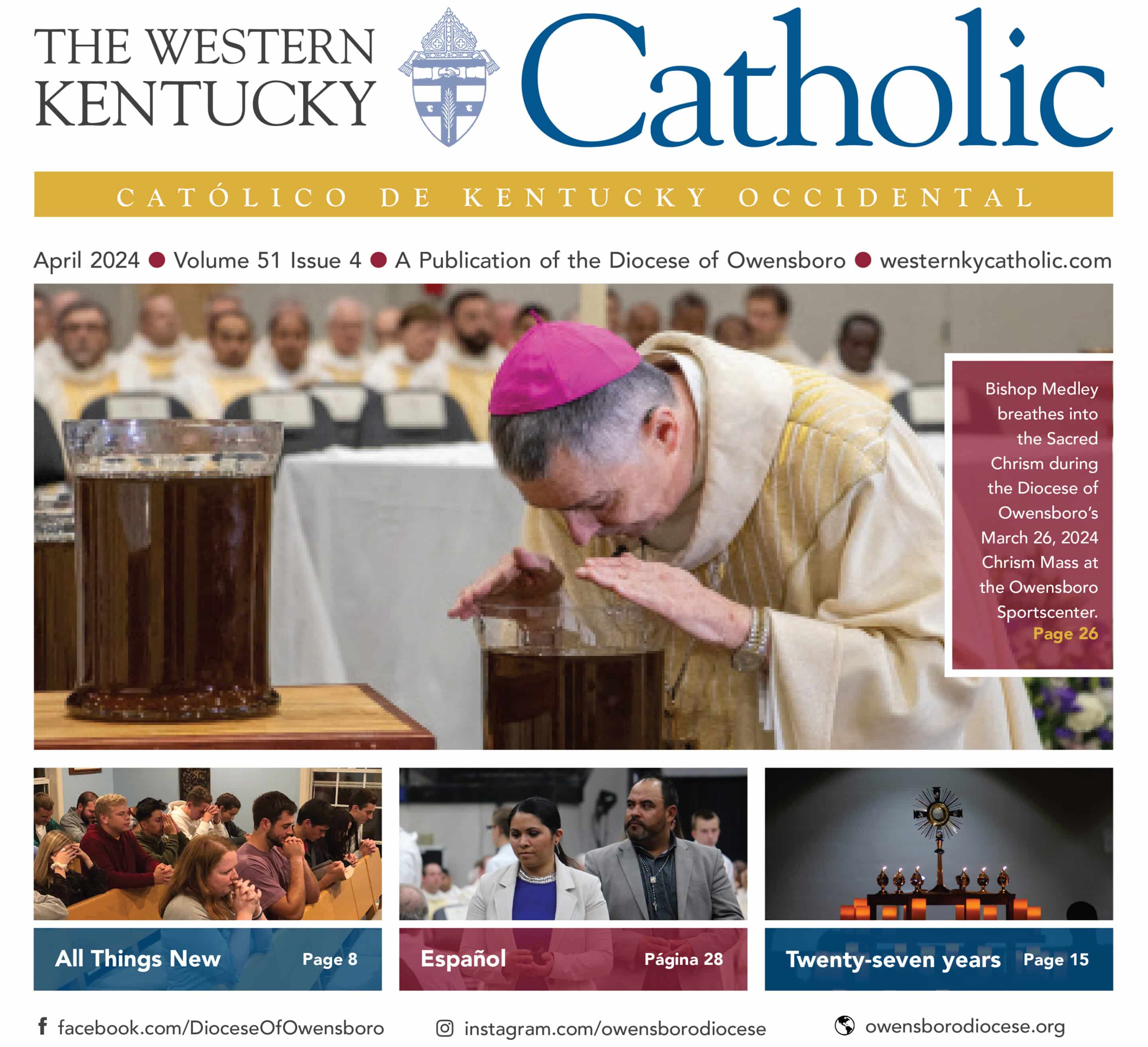
An image of St. Faustina Kowalska is seen during the recitation of the Divine Mercy chaplet on Divine Mercy Sunday April 11, 2021, at Holy Cross Church in the Queens borough of New York City. CNS PHOTO/GREGORY A. SHEMITZ
The origin of Divine Mercy Sunday, the Divine Mercy image, and the Chaplet of Divine Mercy
BY DEACON JAY W. VANHOOSIER, OFFICE OF FAITH FORMATION
St. Faustina:
To many in the 20th century, humankind began to experience what St. John Paull II called “an eclipse of the sense of God.” In failing to see God at work in the world, humankind failed to see God in each other. Consequently, people failed to see and understand the sanctity and inherent dignity in every human life. It was clear to John Paull II – there was an urgent need for the message of Divine Mercy. In the 1930s, Jesus chose a humble Polish nun, St. Maria Faustina Kowalska, to receive private revelations concerning Divine Mercy that were recorded in her Diary. St. John Paul explains:
“This was precisely the time when those ideologies of evil, nazism and communism, were taking shape. Sister Faustina became the herald of the one message capable of off-setting the evil of those ideologies, that fact that God is mercy – the truth of the merciful Christ. And for this reason, when I was called to the See of Peter, I felt compelled to pass on those experiences of a fellow Pole that deserve a place in the treasury of the universal Church.” (St. Pope John Paul II, Memory and Identity (2005))
Divine Mercy Sunday:
St. Faustina’s Diary records 14 occasions when Jesus requested that a Feast of Mercy (Divine Mercy Sunday) be observed, for example:
“My daughter, tell the whole world about My inconceivable mercy. I desire that the Feast of Mercy be a refuge and shelter for all souls, and especially for poor sinners. On that day the very depths of My tender mercy are open. I pour out a whole ocean of graces upon those souls who approach the Fount of My mercy. The soul that will go to Confession and receive Holy Communion shall obtain complete forgiveness of sins and punishment. … Let no soul fear to draw near to Me. … It is my desire that it be solemnly celebrated on the first Sunday after Easter. Mankind will not have peace until it turns to the Fount of My Mercy.” (Diary, no 699)
On May 5, 2000, five days after the canonization of St. Faustina, the Vatican decreed that the Second Sunday of Easter would be known as Divine Mercy Sunday.
The Image:
Jesus appeared to St. Faustina in a vision, with his right hand raised in a blessing and his left touching his garment above his heart. Red and white rays emanate from his heart, symbolizing the blood and water that was poured out for our salvation and our sanctification. The Lord requested that “Jesus, I trust in You” be inscribed under his image. Jesus asked that his image be painted and venerated throughout the world: “I promise that the soul that will venerate this image will not perish” (Diary, no. 48) and “By means of this image I will grant many graces to souls” (Diary, no. 742).
The Chaplet of Divine Mercy:
The Chaplet was also given to Saint Faustina with the promise: “Encourage souls to say the chaplet which I have given you” (Diary, no. 1541). “Whoever will recite it will receive great mercy at the hour of death. … Even if there were a sinner most hardened, if he were to recite this chaplet only once, he would receive grace from My infinite mercy. I desire that the whole world know my infinite mercy” (Diary, no. 687).
Deacon Jay W. VanHoosier is the Director of Faith Formation for the Diocese of Owensboro. For more information visit owensborodiocese.org/faith-formation, email [email protected] or call (270) 852-8324.
Originally printed in the April 2023 issue of The Western Kentucky Catholic.

